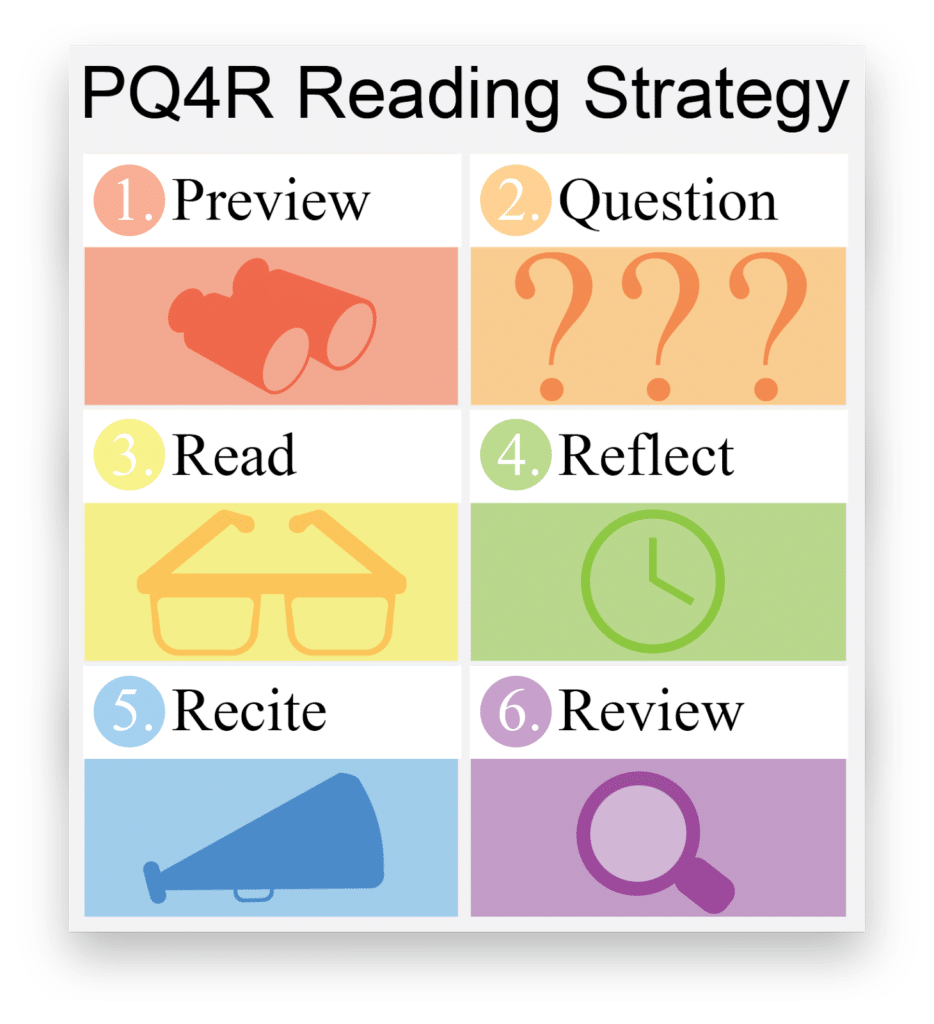
How Can I Help My Homeschool Students Become Better Readers?
Posted In Literature | Posted By Susan YorkIt is not uncommon for a student’s reading fluency to outpace his or her reading comprehension. That means that even though the student can decode words accurately and at a reasonable speed, he or she may have little recollection of the text after the reading.
Homeschool parents are often puzzled when their students seem to read well but then can’t remember anything about what they’ve just read.
Luckily there is a tool that can be adapted for learners of any age — the PQ4R reading strategy.
Following this process will help your students train their brains to pay attention to what they’re reading.
What is the PQ4R Reading Strategy?
The PQ4R strategy is a sequence of steps that a student can apply to any reading. It stands for Preview, Question, Read, Reflect, Recite, Review. While using this strategy may add time to the lesson, it is well worth the time invested.
Students who practice PQ4R regularly will begin to internalize the strategy, and their reading retention will improve.
Preview
In the first step, students will look over the reading selection. They should read the first and last paragraphs of the passage, take note of any headings or bold-faced words, and look at any visuals or pictures along with the captions.
Question
In the second step, students will ask themselves questions based on what they previewed in the first step. When this reading strategy is first introduced, students may need some support and guidance from their homeschool teacher to come up with questions. Teachers may decide to do guided practice using a white board or to have their students express their questions orally. Generating questions helps students anticipate what they will be reading and helps them begin to engage with the ideas in the text. If students are reading from a textbook, this step might be as simple as turning the headings into questions.
In their questioning, students might consider:
- * what they already know about the topic
- * what main points they expect to find in the reading selection
- * questions they hope to answer during the reading
- * what they expect to learn from the reading
Read
In the third step, students read the text from start to finish. As they read, they should mark the ideas that seem important. Students may write directly in the book or use sticky notes if the text is in paper form, or they might make electronic notes if they are using a digital text.
Reflect
In this step, the students will reflect on what they’ve just read to see how it matches up with their observations and predictions in the second step. Teachers may want to have students record their thoughts in their journals or on slips of paper.
As they reflect, the students might consider:
- * if their questions were answered
- * if the reading brought up any new questions
- * how the sections of the reading relate to each other and/or previous readings
- * if anything about the reading was surprising or unexpected
Recite
In the fifth step, students should spend some time talking about what they’ve read and learned. This might take the form of a class discussion, sharing in small groups, or simply a conversation between the teacher and student. It is key that the students summarize the main points of the reading in their own words. If students require extra support during this step, the teacher might consider providing graphic organizers or outlines to guide the process.
Review
In the final step, students should use the observations they made in the first step to check their knowledge and retention of the entire passage. Did they learn information about each main point that they identified? Are there any points they feel unsure about? Teachers may want to use this step as an oral learning check to see which points the students understand well and areas that may need more reinforcement in future lessons.
In order to develop strong reading skills, students must read with frequency and variety. If you’re looking for a homeschool literature curriculum to facilitate this process, consider Essentials in Literature. With a focus on exploring and analyzing literary elements through short stories, short works of nonfiction, novels, and poetry, Essentials in Literature features engaging video lessons and meaningful analysis assignments delivered in bite-sized chunks that make for a low-stress experience for both the homeschool student and teacher.



